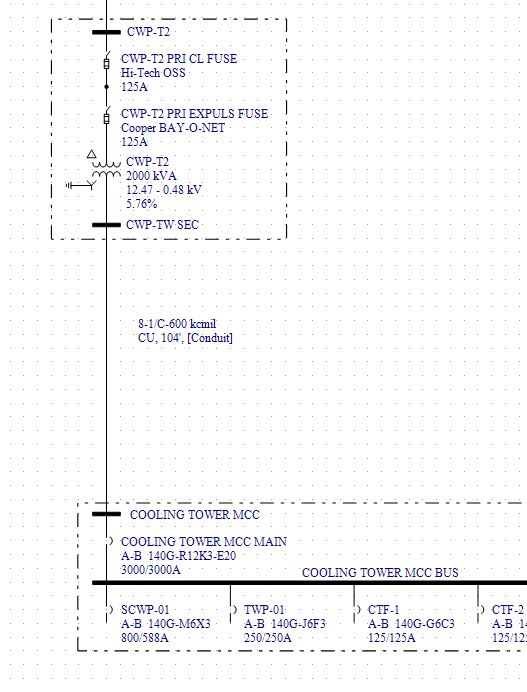bdn2004
Electrical
- Jan 27, 2007
- 799
We've a customer that recently purchased a new MCC: Allen-Bradley 2100 Centerline. It is fed by a captive 2000kVA, 480V transformer that they own also. Per our software there are 65 calories at the incoming MCC terminals - Extreme Danger.
The customer bought a main circuit breaker for the MCC with a maintenance mode switch, but the MCC is not arc protected gear and the bus therefore shares the same air space as the incoming, rendering the main worthless as a protection of arc flash for the entire MCC. That's our understanding anyway.
It's been suggested to install 2000A fuses in a remote location between the transformer and the MCC. That's a costly option.
Does anyone have any thoughts on how to remedy this ?

The customer bought a main circuit breaker for the MCC with a maintenance mode switch, but the MCC is not arc protected gear and the bus therefore shares the same air space as the incoming, rendering the main worthless as a protection of arc flash for the entire MCC. That's our understanding anyway.
It's been suggested to install 2000A fuses in a remote location between the transformer and the MCC. That's a costly option.
Does anyone have any thoughts on how to remedy this ?

